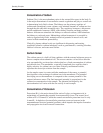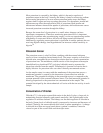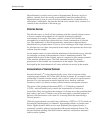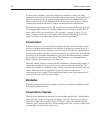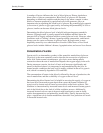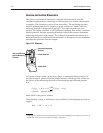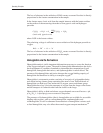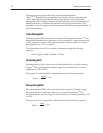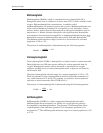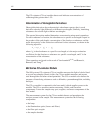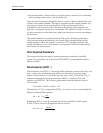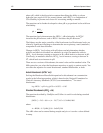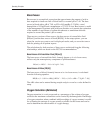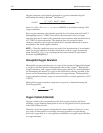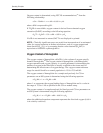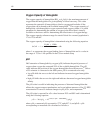
Operating Principles IĆ23
Methemoglobin
Methemoglobin (MetHb), which is sometimes known as hemoglobin Hi, is
hemoglobin whose iron is oxidized to its ferric state (FE(111) and is unable to bind
oxygen. High methemoglobin concentrations, a condition called
methemoglobinemia, can produce hypoxia and cyanosis. Methemoglobinemia can
be the result of hereditary conditions or of exposure to toxic substances such as
nitrates, nitrites, aniline dyes and their derivatives and topical anesthetics such as
benzocaine.
39,41
Infants and other individuals with significant fetal hemoglobin
concentrations show increased susceptibility to methemoglobinemia because fetal
hemoglobin converts to methemoglobin more readily than adult hemoglobin.
27,40
The methemoglobin reference range for arterial or venous blood for a normal
population is 0.0 to 1.5%.
The percent of methemoglobin is determined using the following equation:
FMetHb +
cMetHb
ctHb
100
Carboxyhemoglobin
Carboxyhemoglobin (COHb) is hemoglobin covalently bound to carbon monoxide.
Hemoglobin has over 200 times greater affinity for carbon monoxide than for
oxygen. Hemoglobin bound to carbon monoxide is unavailable for oxygen
transport, and high levels of carboxyhemoglobin result in hypoxia and cyanosis,
which can be fatal.
The carboxyhemoglobin reference range for a normal population is 0.0 to 1.5%.
While the amount of carboxyhemoglobin in the blood of healthy nonsmokers is
very small (between 0.1% and 0.4%), smoking, air pollution, and occupational
exposure to carbon monoxide affect COHb levels.
39
The percent of carboxyhemoglobin is determined using the following equation:
FCOHb +
cOHb
ctHb
100
Sulfhemoglobin
Sulfhemoglobin (SulfHb) is a stable compound of hemoglobin and sulfur.
Sulfhemoglobin has an extremely low affinity for oxygen and may often be
accompanied by methemoglobinemia. The presence of sulfhemoglobin affects
oxyhemoglobin values and other quantities if its absorbance spectrum is not
accounted for.
39
The sulfhemoglobin reference range for a normal population is 0.0
to 2.2%.



